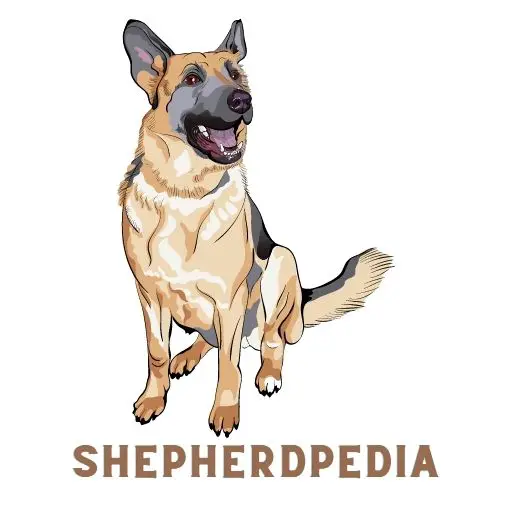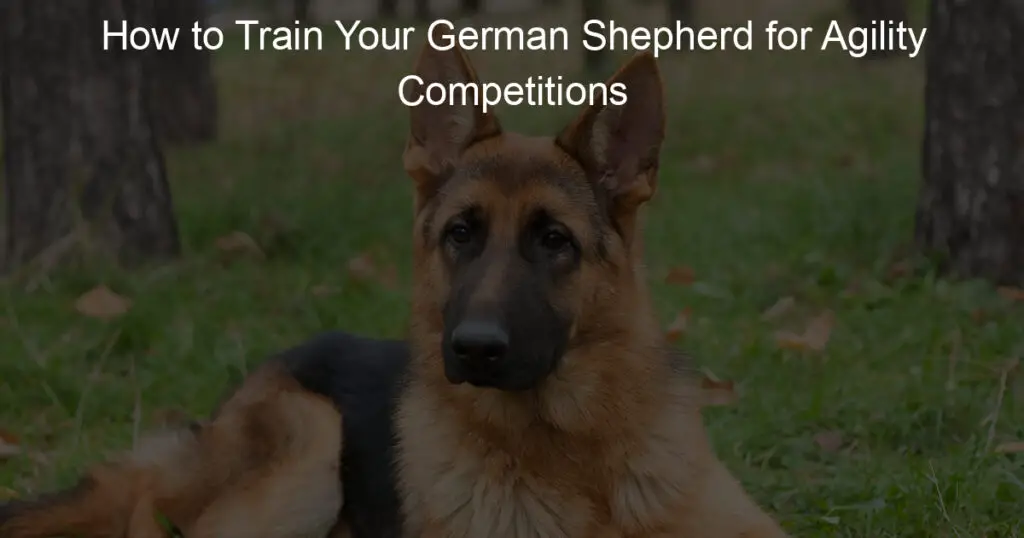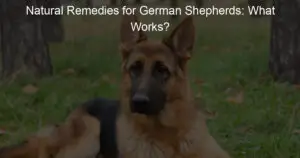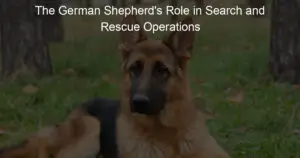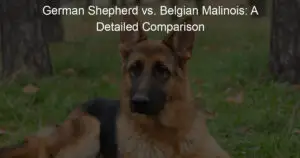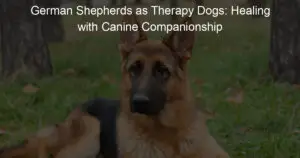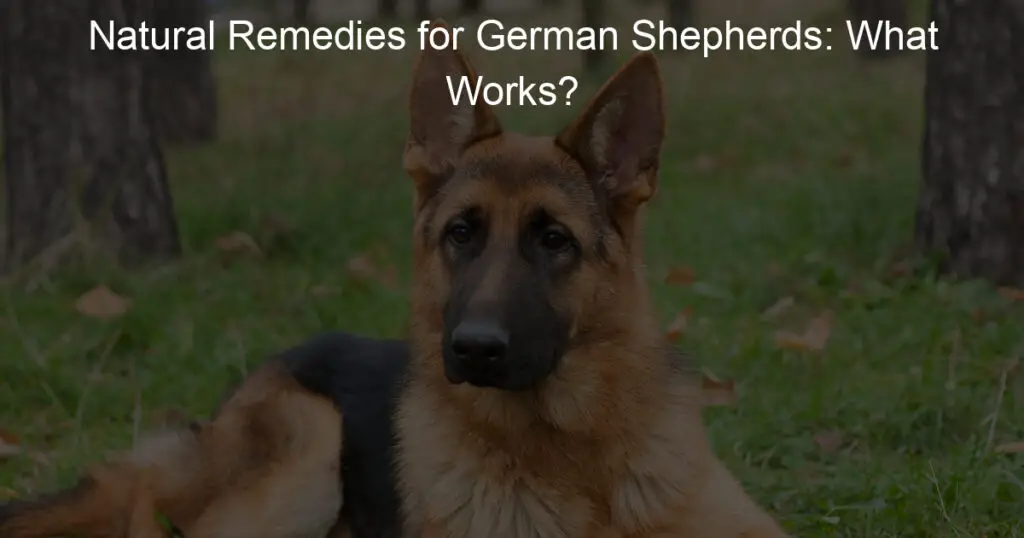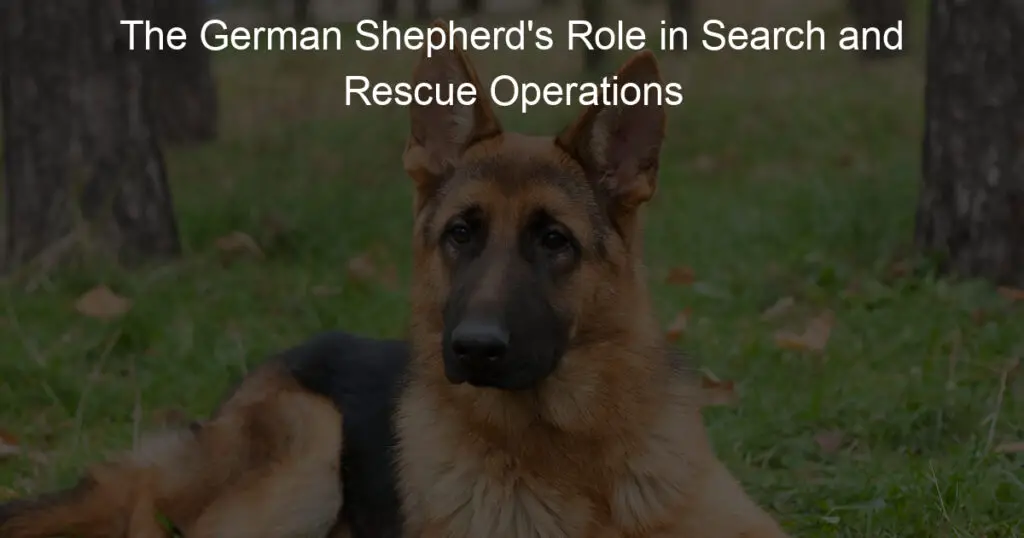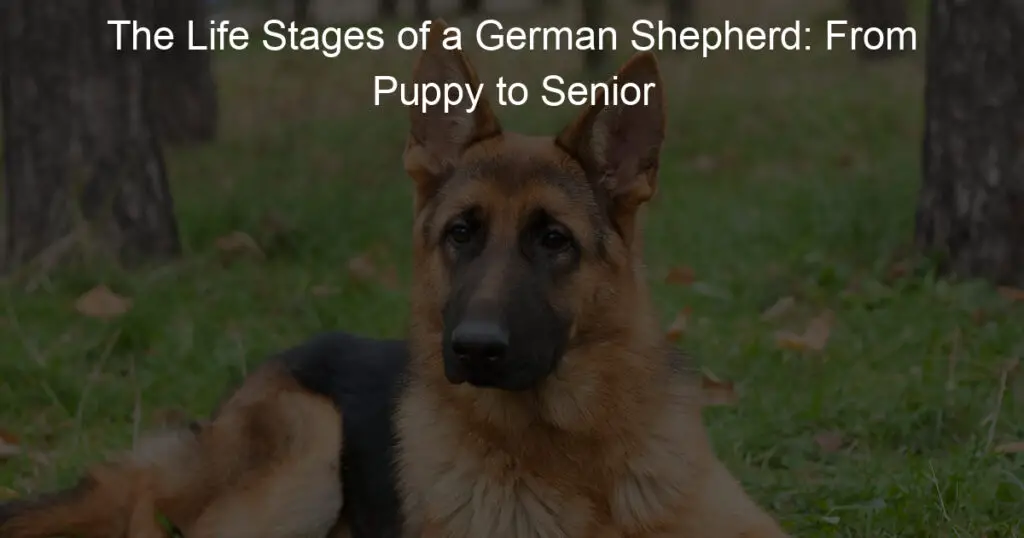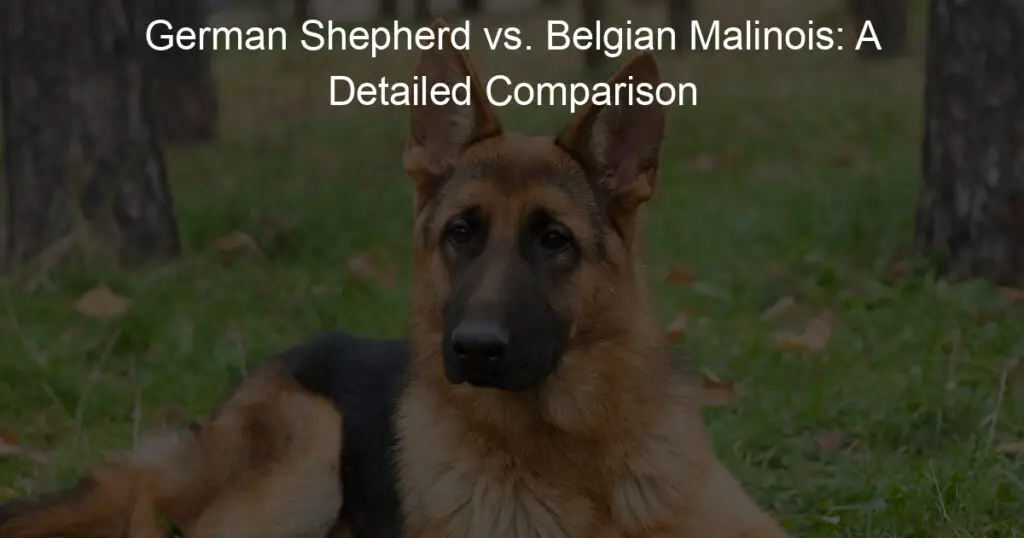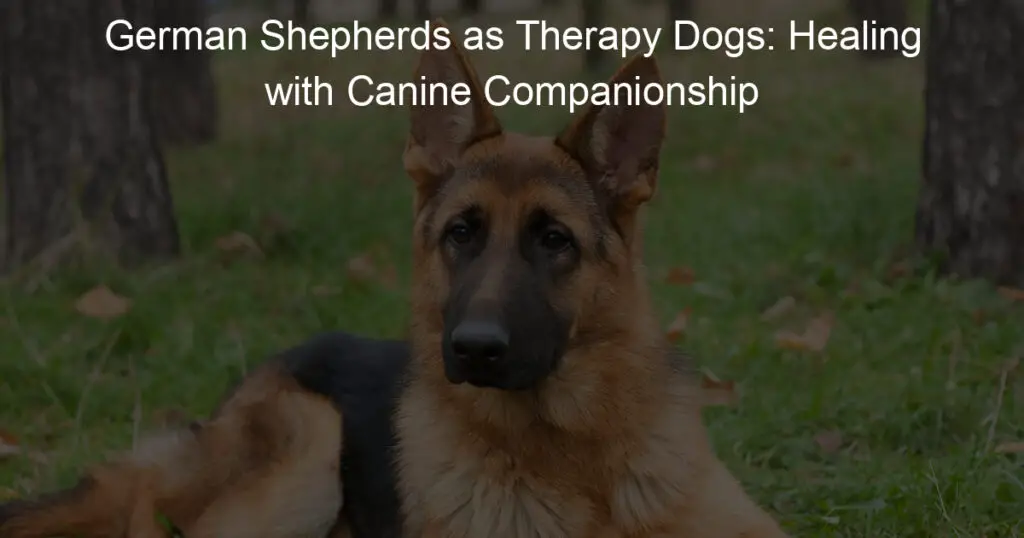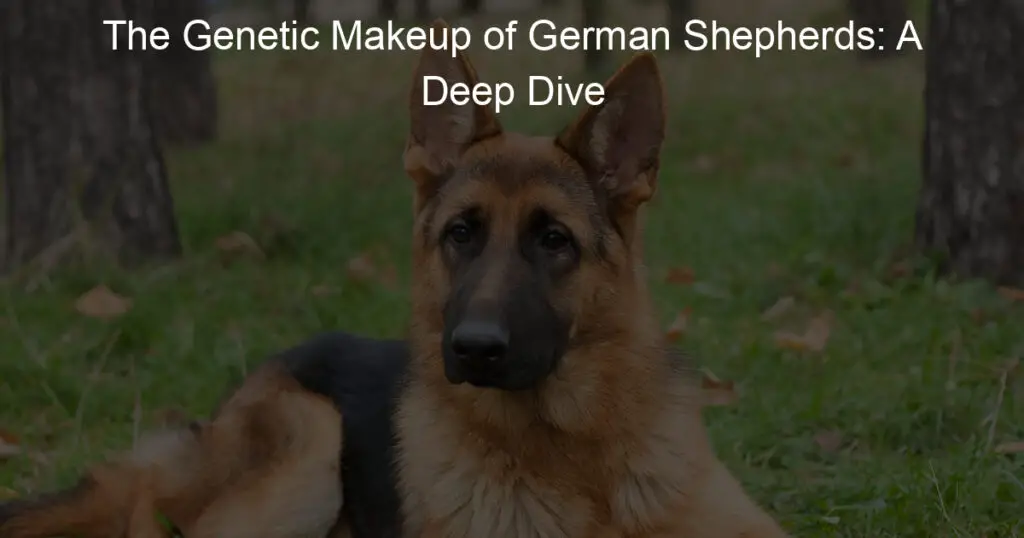Training your German Shepherd for agility competitions requires an understanding of the breed's characteristics, a structured training program, and plenty of practice. This blog post will guide you through the process of preparing your dog for these challenging events, providing tips and techniques that have been proven to enhance speed, flexibility, obedience, and overall performance.
Understanding Your German Shepherd's Natural Abilities
German Shepherds are a highly intelligent and versatile breed known for their exceptional working abilities. Before embarking on agility training, it is crucial to understand their natural abilities and characteristics. German Shepherds were originally bred as herding dogs, which means they have a strong instinct to chase and control movement. This innate drive can be harnessed and channeled into agility training, as it requires quick thinking and precise movements. Additionally, German Shepherds are known for their athleticism and endurance, making them well-suited for the physical demands of agility competitions. Their strong hindquarters and muscular build enable them to leap over obstacles and navigate challenging courses with ease. Furthermore, German Shepherds have a keen sense of smell, which can aid in scent-based agility exercises. Their intelligence and willingness to learn also contribute to their success in agility training. German Shepherds are highly trainable and thrive on mental stimulation, making them eager and responsive participants in agility exercises. It is important to recognize and appreciate these natural abilities when training your German Shepherd for agility competitions. By understanding their instincts and strengths, you can tailor your training methods to capitalize on their natural talents. This will not only enhance their performance but also strengthen the bond between you and your dog. With the right approach and guidance, your German Shepherd can become a formidable competitor in the world of agility.
Why Train Your German Shepherd for Agility Competitions?
Training your German Shepherd for agility competitions offers numerous benefits for both you and your dog. Firstly, agility training provides an excellent outlet for your German Shepherd's energy and natural instincts. Engaging in this challenging and stimulating activity allows them to release pent-up energy, preventing boredom and potentially destructive behaviors. Additionally, agility training promotes physical fitness and overall health. The rigorous exercises involved in agility courses help strengthen your dog's muscles, improve their cardiovascular endurance, and enhance their coordination and balance. Regular agility training sessions can contribute to maintaining a healthy weight and prevent obesity-related health issues.
Moreover, agility training fosters mental stimulation and cognitive development. The complex nature of agility courses requires your German Shepherd to think quickly, problem-solve, and make split-second decisions. This mental engagement helps sharpen their focus, improve their decision-making skills, and enhance their ability to follow commands.
Participating in agility competitions also provides an opportunity for you and your German Shepherd to bond and work together as a team. The trust and communication developed during training sessions will strengthen your relationship and create a deeper understanding between you and your dog.
Furthermore, agility competitions offer a platform for you to showcase your German Shepherd's skills and abilities. It is a chance to demonstrate the hard work and dedication invested in their training. The sense of accomplishment and pride derived from successfully completing a challenging course or earning a placement can be incredibly rewarding for both of you.
Finally, agility competitions provide a supportive and inclusive community of fellow dog enthusiasts. It offers opportunities to network, learn from experienced trainers, and share experiences with like-minded individuals. The camaraderie and support within the agility community can be invaluable, providing encouragement and motivation throughout your training journey.
Essential Equipment for Agility Training
When it comes to agility training, having the right equipment is crucial for your German Shepherd's success and safety. Here are some essential pieces of equipment you'll need to get started:
- 1. Agility Jumps:
These are the most basic and common pieces of equipment in agility training. They consist of adjustable bars that your German Shepherd will jump over. Make sure to choose jumps that are appropriate for your dog's size and skill level. - 2. Tunnels:
Tunnels add an element of excitement and challenge to agility courses. They come in different shapes and sizes, including straight tunnels, collapsible tunnels, and chute tunnels. Introduce your German Shepherd to tunnels gradually, using positive reinforcement to build their confidence. - 3. Weave Poles:
Weave poles are used to teach your dog to weave in and out of a series of upright poles. Starting with a few poles and gradually increasing the number will help your German Shepherd learn the weaving technique and improve their speed and accuracy. - 4. A-Frame:
The A-frame is a large, angled ramp that your German Shepherd will ascend and descend. It helps develop their balance and coordination. Ensure that the surface of the A-frame is not too slippery to prevent any accidents. - 5. Dog Walk:
The dog walk is a narrow, elevated walkway with ramps at each end. It tests your German Shepherd's balance and confidence as they traverse the length of the walkway. It's important to introduce your dog to the dog walk gradually and use positive reinforcement to build their trust. - 6. Pause Table:
The pause table is a raised platform where your German Shepherd will pause for a designated period. It teaches them to wait patiently and allows the handler to control their speed and focus during a course.
Creating a Training Schedule: How much is too much?
When it comes to training your German Shepherd for agility competitions, it's important to strike a balance between consistency and overexertion. While regular training is essential for progress, pushing your dog too hard can lead to physical and mental exhaustion. Here are some factors to consider when creating a training schedule:
- 1. Age and Fitness Level:
Younger dogs may have more energy and stamina, allowing for longer training sessions. However, puppies' growing bodies are more susceptible to injury, so moderation is key. Older dogs may require shorter, more frequent training sessions to avoid strain. - 2. Physical and Mental Health:
Take into account your German Shepherd's overall health and any pre-existing conditions. Consult with your veterinarian to determine the appropriate level of activity and duration of training. Remember, a well-rested and mentally stimulated dog will perform better in agility competitions. - 3. Incremental Progression:
Start with shorter training sessions and gradually increase the duration and intensity over time. This allows your German Shepherd to build strength and endurance at a safe pace. Pushing too hard too soon can lead to burnout and injuries. - 4. Rest and Recovery:
Just like humans, dogs need rest days to recover and recharge. Incorporate regular rest days into your training schedule to prevent fatigue and prevent overuse injuries. Use these days for mental stimulation activities or low-impact exercises like gentle walks.By finding the right balance between training and rest, you can ensure that your German Shepherd progresses without risking their well-being. Pay attention to their body language and behavior during training sessions. If you notice signs of fatigue, such as excessive panting or disinterest, it's time to give them a break.
"Patience and small steps make for giant progress" – Setting Realistic Goals
Setting realistic goals is crucial when training your German Shepherd for agility competitions. While it's natural to have high aspirations for your dog, it's important to remember that progress takes time. By breaking down the training process into small steps and being patient, you can set your German Shepherd up for success. Here's why setting realistic goals is essential:
- 1. Building Confidence:
Setting achievable goals allows your German Shepherd to experience success and build confidence along the way. Each small step accomplished serves as a stepping stone towards more complex agility exercises. This positive reinforcement encourages your dog to continue learning and pushing themselves. - 2. Preventing Frustration:
Unrealistic goals can lead to frustration for both you and your German Shepherd. If you set the bar too high too soon, your dog may become overwhelmed and lose motivation. By starting with manageable goals and gradually increasing difficulty, you create an environment where learning is enjoyable and frustration is minimized. - 3. Consistency and Progress:
By setting realistic goals, you can maintain a consistent training routine. Consistency is key in agility training, as it reinforces the desired behaviors and helps your German Shepherd understand what is expected of them. Small, achievable goals allow for steady progress and prevent regression. - 4. Assessing Individual Abilities:
Every dog is unique, and their learning pace may vary. By setting realistic goals, you can assess your German Shepherd's individual abilities and tailor the training accordingly. This ensures that your dog remains engaged and motivated, rather than feeling overwhelmed or discouraged. - 5. Celebrating Achievements:
When you set realistic goals, you create more opportunities to celebrate your German Shepherd's achievements. Recognizing and rewarding their progress boosts their confidence and strengthens the bond between you both. Remember, even small accomplishments are worth celebrating as they contribute to the overall growth and development of your dog's agility skills.
Basic Obedience: The Foundation of Agility Training
Basic obedience is the foundation of agility training for your German Shepherd. It is essential to establish a strong obedience base before diving into more complex agility exercises. Here's why basic obedience is crucial for agility training:
- 1. Communication and Control:
Basic obedience commands such as sit, down, and stay provide a means of clear communication between you and your German Shepherd. These commands establish control and help you guide your dog through the various agility obstacles. - 2. Focus and Attention:
Obedience training teaches your German Shepherd to focus and pay attention to you, even in distracting environments. This focus is essential during agility competitions where there are numerous distractions and obstacles to navigate. - 3. Safety:
Agility training involves high-energy activities that can be physically demanding for your dog. By teaching basic obedience, you ensure that your German Shepherd understands and responds to commands that can keep them safe during training sessions and competitions. - 4. Building Trust:
Obedience training strengthens the bond between you and your German Shepherd. As your dog learns to trust and obey your commands, the training process becomes smoother and more enjoyable for both of you. - 5. Preparing for Advanced Maneuvers:
Basic obedience lays the groundwork for more advanced agility maneuvers. A strong foundation in obedience sets your German Shepherd up for success when learning complex agility skills such as weaving through poles or navigating the seesaw.
Teaching the 'Sit', 'Down' and 'Stay' Commands
The 'Sit', 'Down', and 'Stay' commands are fundamental obedience commands that are essential for agility training. These commands provide the basis for control and focus during agility exercises. Here's a breakdown of how to teach these commands effectively:
- 1. Teaching the 'Sit' Command:
To teach your German Shepherd the 'Sit' command, start by holding a treat close to their nose. Slowly move the treat upwards, causing their head to follow and their bottom to lower. As their bottom touches the ground, say "Sit" and reward them with the treat. Repeat this process several times, gradually phasing out the treat and using only the verbal command. Practice in different environments to reinforce the command's effectiveness. - 2. Teaching the 'Down' Command:
To teach your German Shepherd the 'Down' command, start with the dog in a sitting position. Hold a treat near their nose and slowly lower it to the ground, between their paws. As they follow the treat and lie down, say "Down" and reward them with the treat. Repeat this process, gradually using only the verbal command. Practice in different locations and at varying distances from you to reinforce the command. - 3. Teaching the 'Stay' Command:
The 'Stay' command is crucial for maintaining control during agility exercises. Start by commanding your German Shepherd to sit or lie down. Hold your hand up, palm facing them, and say "Stay" while taking a step back. If they remain in position, reward them with a treat and praise. Gradually increase the distance and duration of the 'stay' command, always rewarding them for successful stays. Practice in different environments and with various distractions to reinforce the command's reliability.
Training Your Dog to Jump: How high can your German Shepherd go?
When it comes to agility competitions, jumping is a crucial skill that your German Shepherd must master. Training your dog to jump requires patience, consistency, and proper technique. Here are some key tips to help you train your German Shepherd to jump:
- 1. Start with Low Jumps:
Begin by setting up low jumps that your dog can easily clear. Use agility-specific jump bars or even household items like broomsticks laid across two sturdy objects. Encourage your German Shepherd to jump over the bar by using treats or toys as motivation. Gradually increase the height of the jumps as your dog becomes more comfortable and confident. - 2. Proper Form and Technique:
It's important to teach your German Shepherd the correct jumping form and technique. Start by guiding them over the jump, ensuring they lift their front legs and tuck their hind legs under their body. Reward them with treats and praise for proper execution. Repeat this process until they understand the mechanics of jumping and can perform it independently. - 3. Introduce Different Jump Types:
To prepare your German Shepherd for agility competitions, expose them to different types of jumps. This includes single bars, double jumps, and spread jumps. Each jump requires a slightly different approach and technique. Introduce these variations gradually, providing proper guidance and rewards for successful attempts.
Navigating Tunnels: Can your German Shepherd conquer its fear?
Tunnels can be intimidating for some dogs, including German Shepherds. However, with proper training and desensitization, your German Shepherd can conquer its fear and become a confident tunnel navigator. Here are some steps to help you train your German Shepherd to navigate tunnels:
- 1. Introduce the Tunnel Gradually:
Start by introducing your German Shepherd to a collapsed tunnel. Allow them to sniff and explore it at their own pace. Use treats and praise to create a positive association with the tunnel. Gradually extend the tunnel, allowing your dog to walk through it without any pressure. - 2. Use Positive Reinforcement:
As your German Shepherd becomes more comfortable with the tunnel, begin using positive reinforcement techniques. Encourage them to enter the tunnel by placing treats or toys at the entrance. Use a command such as "Go tunnel" to signal them to enter. Reward them with praise and treats when they successfully navigate the tunnel. - 3. Build Confidence with Short Distances:
Start with short distances and gradually increase the length of the tunnel. This will help build your German Shepherd's confidence and trust in their ability to navigate through the tunnel. Be patient and allow them to progress at their own pace. - 4. Work on Speed and Focus:
Once your German Shepherd is comfortable with the tunnel, you can start working on speed and focus. Use commands such as "through" or "fast" to encourage them to move quickly through the tunnel. Practice different scenarios, such as sending them into the tunnel from different angles or while they are in motion, to improve their agility and responsiveness.
Weaving Through Poles: Does your German Shepherd have the agility?
Weaving through poles is a challenging and exciting aspect of agility competitions. It requires precision, speed, and agility from your German Shepherd. Before you start training your dog to weave through poles, it is important to assess their natural agility and determine if they are physically capable of performing this task.
To begin the training process, set up a line of poles with enough space in between for your German Shepherd to weave through. Start by using cones or other markers instead of actual poles, as they are less intimidating for your dog.
Introduce your German Shepherd to the poles and encourage them to walk around them. Use treats and positive reinforcement to reward their progress. Gradually decrease the spacing between the poles as your dog becomes more comfortable.
Next, teach your German Shepherd the command to weave. Use a specific word or phrase, such as "weave" or "through," and guide them through the poles with a treat in hand. Be patient and consistent, and reward them each time they successfully complete a weave.
As your German Shepherd becomes more proficient, increase the speed and difficulty of the weave. Practice weaving from different angles and directions, and gradually decrease the spacing between the poles.
It's important to note that weaving through poles requires your German Shepherd to bend and twist their body in a precise manner. Some dogs may naturally excel at this, while others may struggle. If your dog seems to be having difficulty, consider consulting a professional agility trainer for additional guidance.
The Seesaw and the Dog Walk: Is your German Shepherd ready for the challenge?
The seesaw and the dog walk are two common obstacles in agility competitions that require your German Shepherd to demonstrate balance, control, and confidence. Before introducing these challenges, it's crucial to ensure that your dog has mastered basic obedience commands and has developed a solid foundation in agility training.
The dog walk is a long narrow plank with raised edges, and it requires your German Shepherd to walk across it with precision and stability. Start by introducing your dog to a low and stable platform to build their confidence. Encourage them to walk across it using treats as positive reinforcement. Gradually increase the height and narrowness of the platform as your dog becomes more comfortable.
The seesaw is a dynamic obstacle that requires your German Shepherd to walk up a ramp and balance on a pivoting plank before descending on the other side. Begin by teaching your dog to walk confidently on a flat plank. Once they are comfortable, introduce a gentle incline and gradually increase the angle. Use treats and praise to reward your dog for maintaining balance and control.
It's important to note that both the dog walk and the seesaw require your German Shepherd to trust their own abilities and remain focused. Take the time to build their confidence through positive reinforcement and gradual progression. Be patient and supportive during the training process, and never force your dog to attempt an obstacle before they are ready.
If your German Shepherd is struggling with either the dog walk or the seesaw, consider seeking guidance from an experienced agility trainer. They can provide valuable insights and techniques to help your dog overcome any challenges they may face.
The A-Frame: Can your German Shepherd climb to the top?
The A-Frame is another challenging obstacle in agility competitions that tests your German Shepherd's climbing abilities. It consists of two ramps that meet at the top to form an "A" shape. The goal is for your dog to ascend one side, reach the peak, and descend the other side with control and confidence.
Introducing your German Shepherd to the A-Frame should be done gradually and with patience. Begin by allowing your dog to explore and sniff the equipment while it is at ground level. Use treats and positive reinforcement to create a positive association with the obstacle.
Once your dog is comfortable around the A-Frame, you can start training them to climb it. Begin by placing the A-Frame at a low height to reduce the challenge. Encourage your German Shepherd to climb up one side using treats and praise as motivation. Gradually increase the height as your dog becomes more confident and capable.
To ensure safety, it is important to teach your German Shepherd how to descend the A-Frame using controlled movements. Practice having your dog pause at the top before slowly descending the other side. Reinforce this behavior through rewards and praise.
When training your German Shepherd for the A-Frame, it's crucial to prioritize their safety. Ensure that the equipment is stable and secure, and never force your dog to attempt the obstacle if they are not ready. Seek guidance from an experienced agility trainer if needed.
Preparing for the Big Day: What should you do before the competition?
Before the big day of an agility competition, there are several important steps you should take to ensure that both you and your German Shepherd are fully prepared. By following these guidelines, you can increase your chances of success and make the experience enjoyable for both you and your furry companion.
- 1. Finalize Your Training:
In the days leading up to the competition, it's important to review and reinforce the training exercises you've been practicing with your German Shepherd. Focus on any areas that may need extra attention or improvement. This will help solidify your dog's understanding of the commands and obstacles they will encounter during the competition. - 2. Mental and Physical Preparation:
Ensure that your German Shepherd is in optimal physical condition by keeping up with regular exercise and providing a balanced diet. Mental stimulation is equally important, so engage your dog in activities that challenge their problem-solving skills and keep their mind sharp. - 3. Familiarize Yourself with the Venue:
If possible, visit the competition venue ahead of time. Walk through the course and familiarize yourself with the layout and various obstacles. This will help both you and your German Shepherd feel more comfortable and confident on the day of the event. - 4. Pack the Essentials:
Prepare a checklist of all the necessary items you will need on the day of the competition. This may include a leash, treats, water, portable water bowl, poop bags, and any other equipment required for your dog's comfort and safety. Double-check the list to ensure nothing gets left behind. - 5. Calm Your Nerves:
It's natural to feel a bit nervous before a competition, but remember to stay calm and composed. Dogs are perceptive and can pick up on their owner's emotions. Your German Shepherd will look to you for guidance and reassurance, so maintaining a calm demeanor will help them feel more at ease.
Tips for Training Your German Shepherd for Agility Competitions:
| Tip | Benefit | Action | Source |
|---|---|---|---|
| Understand the breed's characteristics | Helps to ensure the training is tailored to the individual dog | Research common German Shepherd traits | Veterinary websites, books, and forums |
| Create a structured training program | Helps to ensure steady progress | Break down the skills into manageable steps | Agility training classes or YouTube videos |
| Practice and reward good behavior | Reinforces the desired behavior | Praise and reward your dog when it succeeds | Positive reinforcement techniques |
| Increase speed, flexibility, and obedience | Improves performance in competitions | Use agility drills that focus on these areas | Agility training classes or YouTube videos |
Training your German Shepherd for agility competitions can be a rewarding experience, strengthening the bond between you and your pet while boosting their physical health and mental stimulation. Remember, consistency, patience, and positive reinforcement are key. Keep practices fun and engaging, and soon, you'll be proudly watching your German Shepherd navigate the agility course with skill and confidence.
